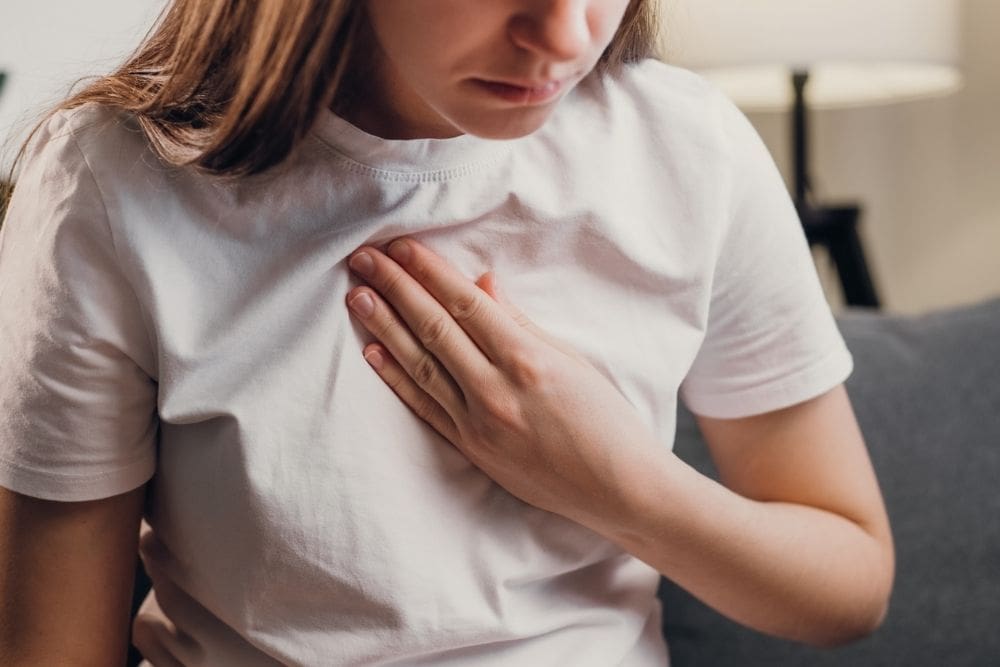Your heart is racing, you begin to sweat, your thoughts are spiraling, and you no longer feel in control of what’s happening. What is going on? These are all symptoms of a panic attack—a sudden wave of intense fear that can feel completely overwhelming. In those moments, it may seem like you’re losing your mind or even in danger of dying. However, rest assured that what you’re experiencing, while terrifying, is temporary and treatable. With the right coping strategies and support, you can learn to calm your body and mind whenever a panic attack strikes.
Signs of a Panic Attack
Panic attacks can happen anywhere—while you’re driving, at work, in a crowded store, or even sitting quietly at home. They often come without warning, which can make them even more frightening.
Some common signs of a panic attack include:
- Sudden sense of fear, danger, or loss of control
- Rapid or pounding heartbeat
- Shortness of breath or throat tightness
- Sweating, trembling, or chills
- Hot flashes or dizziness
- Chest pain or nausea
- Numbness, tingling, or shaking
- Feeling detached from reality or yourself
If these symptoms sound familiar, know that you’re not alone. Panic attacks are a common experience among people with anxiety disorders, and they do not mean that something is “wrong” with you. They are your body’s exaggerated response to stress—a misfiring of your natural fight-or-flight system.
Ways to Cope When You Have a Panic Attack
In the middle of a panic attack, it can feel like there’s no way out. But there are strategies that can help you ground yourself, slow your breathing, and remind your body that you are safe.
- Focus on your breathing.
Panic attacks often cause rapid, shallow breathing that makes symptoms worse. Try to slow your breathing by inhaling deeply through your nose for four seconds, holding for two, and exhaling slowly through your mouth for six. Focusing on your breath helps activate the body’s relaxation response and can bring you back to the present moment. - Remind yourself that this will pass.
One of the most powerful tools you have is your own reassurance. Panic attacks are temporary. They usually peak within 10 minutes and then subside. Telling yourself “I’m safe,” or “This will be over soon,” can reduce the intensity of the fear. - Ground yourself with your senses.
Use the 5-4-3-2-1 technique to help ground you and shift your focus from frightening thoughts to your surroundings, helping your brain recognize that you’re not in danger. To do this, identify:
- 5 things you can see
- 4 things you can touch
- 3 things you can hear
- 2 things you can smell
- 1 thing you can taste
- Relax your body.
Panic attacks often cause muscle tension. Try progressive muscle relaxation by tightening and releasing each muscle group, starting from your toes and moving up to your shoulders. This technique helps your body signal safety to your brain. - Avoid resisting the feeling.
Fighting against a panic attack can sometimes make it worse. Instead, remind yourself that you can ride the wave of panic. Let the sensations come and go without judging them. The less you resist, the sooner the intensity tends to fade.
Anxiety Treatment Options
While coping strategies can help you manage panic attacks in the moment, ongoing anxiety or frequent panic attacks may require additional support. You don’t have to face this alone—professional help can make a meaningful difference.
At Creekside Behavioral Health in Kingsport, Tennessee, we provide compassionate, evidence-based treatment for individuals living with anxiety and panic disorders. Our team of mental health professionals understands how overwhelming anxiety can be and offers a variety of treatment options designed to help you regain control of your life.
Treatment options may include:
- Therapy: Cognitive Behavioral Therapy (CBT) is one of the most effective forms of treatment for panic disorder. It helps you identify and change the thought patterns that trigger anxiety and panic.
- Medication management: In some cases, medication can help regulate brain chemistry and reduce the frequency and severity of panic attacks.
- Stress management techniques: Learning relaxation exercises, mindfulness, and grounding skills can help you better cope with everyday stress and prevent future panic episodes.
- Supportive environment: If you or someone you love is struggling with anxiety or panic attacks, contact Creekside Behavioral Health today. We offer a safe, structured setting where you can learn coping skills and gain confidence in managing anxiety.





